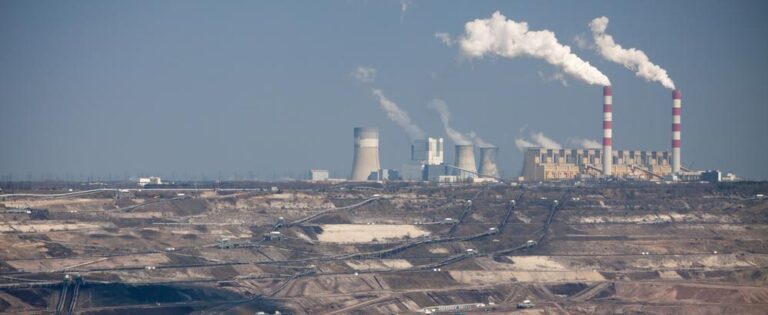Carbon capture techniques have long been considered a good intermediate step in the fight against climate change, because they make existing power plants and heavy industries more environmentally friendly while research continues into renewable sources of energy.According to the International Energy Agency, carbon capture is one of the most inexpensive ways to cut greenhouse gas emissions to prevent a 2 degrees Celsius rise in global temperatures. That degree of warming is widely predicted to be a threshold beyond which there will be dramatic consequences in the form of failed crops and increased natural disasters.The European Union, which has committed to reduce greenhouse gas emissions by at least one-fifth below 1990 levels by 2020, has been encouraging the uptake of carbon capture. The EU’s Carbon Capture and Storage (CCS) Directive has set out guidelines for the safe geological storage of carbon dioxide, and millions of euros are being invested in scientific research to find the best technologies.The principal idea behind carbon capture is to clean exhaust gases coming from power plants and heavy industries by removing the carbon dioxide. The trick is to find technologies that extract the carbon dioxide, and that are environmentally friendly to manufacture and use.The right materialLast year, scientists working on the FP7-backed project COORDSPACE, which received a European Research Council grant worth EUR 2.5 million and was led byProf. Martin Schröder, revealed a new porous material that might do the job. Called NOTT-300, the material contains so-called hydroxyl groups that bind to both carbon dioxide and sulphur dioxide, another harmful gas that causes acid rain.The researchers used the original material’s unique defect structure to create an interlocking ‘metal organic framework’ that acts like a sponge, allowing carbon dioxide to be absorbed and trapped in the material’s nanopores, while other gases like methane, hydrogen and nitrogen filter through.Researchers will have to demonstrate that porous materials like NOTT-300 can be manufactured in quantities sufficient to cover exhaust flues. Not a challenge, though, for another FP7-backed project called IoLiCAP, which aims simply to fill up an exhaust flue with short pieces of tube and then sprinkle over a carbon-capturing solvent.In this process, carbon dioxide reacts with the solvent as the exhaust gases rise up the flue around the tube pieces. Afterwards, the solvent can be collected and heated to release the carbon dioxide in a safe location.IoLiCAP is currently investigating solvents made of ionic liquids – essentially salts in liquid form – to replace ammonia-containing ‘amines’, which have been used previously. Ionic liquids are known to have a high carbon dioxide solubility and, unlike amines, do not evaporate easily or corrode working parts.Unfortunately most ionic liquids are expensive, and are too viscous to coat tubes evenly. ‘Our main challenge is to design new ionic liquids starting from cheap raw materials, and to implement them in solutions with water to overcome the problem of high viscosity,’ said project coordinator George Romanos, who is based at the National Centre for Scientific Research ‘Demokritos’ in Athens, Greece.Nearly two years since IoLiCAP started, Romanos and his colleagues have developed a mixture of ionic liquids and amines that performs just as well as a solvent containing amines only. Romanos says tests into the toxicity and corrosion levels of the mixture are ‘very promising’.Burning a new pathCOORDSPACE and IoLiCAP are both developing carbon-capture methods for incorporation in existing industries that burn fossil fuels. But other FP7 projects are seeking to change the process of combustion itself.“‘It makes a lot of sense to capture and use this gas.’Clemens Backhaus, Fraunhofer Institute for Environmental, Safety, and Energy Technology UMSICHT, GermanyThe SUCCESS project, for instance, is exploring a technique known as chemical looping, in which fossil fuels are burnt with a solid metal oxide, rather than in oxygen gas or in air. The reaction generates carbon dioxide and steam, but the process does not produce other gases such as nitrogen oxides and the carbon dioxide can be much more easily captured by condensing the steam than after burning in oxygen from the flue gases.Research has already shown chemical looping to be effective on small scales with 140 kilowatt power generation, so SUCCESS is aiming to develop the technique for large-scale, 10 megawatt power generation. ‘Demonstration in this range will need tons of the oxygen carrier material (i.e. solid metal oxide),’ said project coordinator Stefan Penthor at the Vienna University of Technology in Austria.SUCCESS only started in September 2013, but it has EUR 7.1 million funding from the EU and a total budget of EUR 9.9 million to make chemical looping feasible on a large scale. Penthor said the two challenges will be in sourcing raw materials for the oxygen-carrier material, and in designing new reactors for the alternative combustion.Meanwhile, some FP7 projects are even looking beyond the problem of carbon dioxide to methane, which is 21 times more potent as a greenhouse gas. Launched in 2008, the CoMeth project is helping to collect the methane released during coal mining and use it on site as a fuel.Normally, mining companies vent methane to the atmosphere because it has been too diluted to be exploited as a fuel. In response, CoMeth has been developing technology to concentrate the methane safely on site, and presenting an economic case to mining companies to help them take the technology on board.Most European coal mining now takes place in Eastern Europe, and CoMeth has seen its methane-capture technology taken up at sites in Russia and Poland, according to technical project leader Clemens Backhaus at the Fraunhofer Institute for Environmental, Safety, and Energy Technology UMSICHT in Oberhausen, Germany. ‘It makes a lot of sense to capture and use this gas,’ he said.
This article was originally published in Horizon, the EU Research and Innovation magazine.
Add to favorites:
Share:
Listing Description
Video
Documents
No documents available.
Ask KETMarket to make a contact
Connect with the Listing Owner!
💬 Please log in now to askKETMarket to make a contact. Not a member yet? Sign up for free and start connecting today!
Video
Related Funding and Finance Opportunities
Unlock Exclusive Funding Opportunities!
🔑 Get instant access to tailored funding opportunities that perfectly match your needs. This powerful feature is exclusively available to our premium members—helping you save time, stay ahead of the competition, and secure the right funding faster.
Upgrade to Premium now and never miss an important opportunity again! Already a premium member? Log in here to explore your matches.
Related Innovation Offers
Discover Tailored Innovation Offers!
🚀 Gain access to technology solutions that match your specific needs and interests—carefully selected to support your innovation goals. These offers are exclusively available to our premium members, helping you identify relevant technologies faster and start the right conversations with potential partners.
Upgrade to Premium now and explore your personalized technology matches today! Already a premium member? Log in here to view your tailored offers.
Related Knowledgeable Resources
Discover More with Premium: Related Knowledge Resources
🔒 You’re missing out on expert-curated knowledge specifically matched to this topic. As a Premium member, you gain exclusive access to in-depth articles, guides, and insights that help you make smarter decisions, faster.
Whether you’re preparing a funding proposal, researching a new market, or just need reliable information—our Premium knowledge matches save you hours of research and point you directly to what matters.
Upgrade to Premium now and instantly unlock relevant knowledge tailored to your needs! Already a member? Log in here to view your personalized content.

